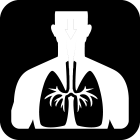 Likely to cause
Likely to cause
 Can cause
Can cause
 May cause
May cause
Xylenes
CAS: 1330-20-7
How can this chemical affect my health?
Acute (Short Term) Effects

Toxic to Humans & Animals – Toxicity or fatality on contact, ingestion or inhalation to humans and other mammals.

Skin Irritation – Irritation or serious damage to the skin.

Eye Irritation – Irritation or serious damage to the eyes.
Data sources
Direct Hazard » Toxic to Humans & Animals
These sources refer directly to this chemical:
- FIFRA Registered PesticideUS EPA - OPP - Registered PesticidesUS Environmental Protection Agency (US EPA)
- H312 - Harmful in contact with skin [Acute toxicity (dermal) - Category 4]EU - GHS (H-Statements) Annex 6 Table 3-1European Union / European Commission (EU EC)
- H332 - Harmful if inhaled [Acute toxicity (inhalation) - Category 4]EU - GHS (H-Statements) Annex 6 Table 3-1European Union / European Commission (EU EC)
- H312 - Harmful in contact with skin [Acute toxicity (dermal) - Category 4]GHS - KoreaRepublic of Korea - National Institute of Environmental Research (NIER)
- H332 - Harmful if inhaled [Acute toxicity (inhalation) - Category 4]GHS - KoreaRepublic of Korea - National Institute of Environmental Research (NIER)
- H312 - Harmful in contact with skin [Acute Toxicity (dermal) - Category 4]GHS - JapanGovernment of Japan
- H332 - Harmful if inhaled [Acute toxicity (inhalation: vapor) - Category 4]GHS - JapanGovernment of Japan
- H312 - Harmful in contact with skin [Acute toxicity (dermal) - Category 4]GHS - MalaysiaMalaysia Department of Occupational Safety and Health
- H332 - Harmful if inhaled [Acute toxicity (inhalation) - Category 4]GHS - MalaysiaMalaysia Department of Occupational Safety and Health
- H312 - Harmful in contact with skin [Acute toxicity (dermal) - Category 4]GHS - AustraliaSafe Work Australia
- H332 - Harmful if inhaled [Acute toxicity (inhalation) - Category 4]GHS - AustraliaSafe Work Australia
- H336 - May cause drowsiness or dizziness [Specific target organ toxicity - Single exposure - Category 3 (Narcotic effects)]GHS - JapanGovernment of Japan
- Acute dermal toxicity category 4GHS - New ZealandTe Mana Rauhī Taiao (Aotearoa New Zealand EPA)
- Acute oral toxicity category 4GHS - New ZealandTe Mana Rauhī Taiao (Aotearoa New Zealand EPA)
Direct Hazard » Skin Irritation
These sources refer directly to this chemical:
- H315 - Causes skin irritation [Skin corrosion/irritation - Category 2]EU - GHS (H-Statements) Annex 6 Table 3-1European Union / European Commission (EU EC)
- H315 - Causes skin irritation [Skin corrosion/irritation - Category 2]GHS - KoreaRepublic of Korea - National Institute of Environmental Research (NIER)
- Skin irritation category 2GHS - New ZealandTe Mana Rauhī Taiao (Aotearoa New Zealand EPA)
- H315 - Causes skin irritation [Skin corrosion / irritation - Category 2]GHS - JapanGovernment of Japan
- H315 - Causes skin irritation [Skin corrosion/irritation - Category 2]GHS - MalaysiaMalaysia Department of Occupational Safety and Health
- H315 - Causes skin irritation [Skin corrosion/irritation - Category 2]GHS - AustraliaSafe Work Australia
Direct Hazard » Eye Irritation
These sources refer directly to this chemical:
- H319 - Causes serious eye irritation [Serious eye damage/irritation - Category 2]GHS - KoreaRepublic of Korea - National Institute of Environmental Research (NIER)
- Eye irritation category 2GHS - New ZealandTe Mana Rauhī Taiao (Aotearoa New Zealand EPA)
- H319 - Causes serious eye irritation [Serious eye damage / eye irritation - Category 2]GHS - JapanGovernment of Japan
Chronic (Long Term) Effects

Endocrine Disruption – Interference with the endocrine system, which plays a crucial role in metabolism, development, growth, reproduction and behavior.

Other Health Effects – Can cause serious damage on contact or ingestion.

Brain/Nervous System Harm – Damage to the nervous system including the brain.

Reproductive Harm – Disruption of the male or female reproductive systems, changing sexual development, behavior or functions, decreasing fertility, or resulting in loss of the fetus during pregnancy.
Data sources
Direct Hazard » Endocrine Disruption
These sources refer directly to this chemical:
- Potential Endocrine DisruptorTEDX - Potential Endocrine DisruptorsThe Endocrine Disruption Exchange (TEDX)
Direct Hazard » Other Health Effects
These sources refer directly to this chemical:
- H372 - Causes damage to organs through prolonged or repeated exposure [Specific target organ toxicity - Repeated exposure - Category 1]GHS - KoreaRepublic of Korea - National Institute of Environmental Research (NIER)
- H372 - Causes damage to organs through prolonged or repeated exposure [Specific target organs/systemic toxicity following repeated exposure - Category 1]GHS - JapanGovernment of Japan
- H370 - Causes damage to organs [Specific target organs/systemic toxicity following single exposure - Category 1]GHS - JapanGovernment of Japan
- H335 - May cause respiratory irritation [Specific target organ toxicity - single exposure; Respiratory tract irritation - Category 3]GHS - AustraliaSafe Work Australia
- H304 - May be fatal if swallowed and enters airways [Aspiration hazard - Category 1]GHS - AustraliaSafe Work Australia
- Specific target organ toxicity - repeated exposure category 2GHS - New ZealandTe Mana Rauhī Taiao (Aotearoa New Zealand EPA)
Direct Hazard » Brain/Nervous System Harm
These sources refer directly to this chemical:
- H336 - May cause drowsiness or dizziness [Specific target organ toxicity - Single exposure - Category 3]GHS - KoreaRepublic of Korea - National Institute of Environmental Research (NIER)
Direct Hazard » Reproductive Harm
These sources refer directly to this chemical:
- Reproductive toxicity category 2GHS - New ZealandTe Mana Rauhī Taiao (Aotearoa New Zealand EPA)
- H360 - May damage fertility or the unborn child [Toxic to reproduction - Category 1B]GHS - JapanGovernment of Japan
Inherent Hazards

Restricted List – This chemical is on a list from an authoritative body recommending that its use be avoided.

Flammable – Easily ignited and capable of burning rapidly.
Data sources
Direct Hazard » Restricted List
These sources refer directly to this chemical:
- HAPs subject to the Clean Air ActUS EPA - Hazardous Air PollutantsUS Environmental Protection Agency (US EPA)
- Candidate Chemical ListCA SCP - Candidate ChemicalsCalifornia Department of Toxic Substance Control (CA DTSC)
- Assessment of regulatory needsEU - PACT-RMOA SubstancesEuropean Union / European Commission (EU EC)
- AntimicrobialsGSPI - Six Classes Precautionary ListGreen Science Policy Institute (GSPI)
- Some SolventsGSPI - Six Classes Precautionary ListGreen Science Policy Institute (GSPI)
- Chemicals of High ConcernMDH - Chemicals of High Concern and Priority ChemicalsMinnesota Department of Public Health
- ZDHC - MRSL v1.1 for Textiles and Synthetic Leather ProcessingZDHC - MRSL v1.1Zero Discharge of Hazardous Waste Chemicals Programme
- Tier 1 “Do Not Use Chemicals” for EveryoneCampaign for Safe Cosmetics’ Red List of Chemicals of ConcernCampaign for Safe Cosmetics
- Limit of harmful substances in industrial protective coatings (GB 30981-2020)China's limit standard for volatile organic compoundsState Administration for Market Regulation - Standardization Administration of China
- Limit standard for volatile organic compounds content in adhesives (GB 33372-2020)China's limit standard for volatile organic compoundsState Administration for Market Regulation - Standardization Administration of China
- Limit standard for volatile organic compounds content in printing inks (GB 38507-2020)China's limit standard for volatile organic compoundsState Administration for Market Regulation - Standardization Administration of China
- Limit standard for volatile organic compounds content in cleaning agents (GB 38508-2020)China's limit standard for volatile organic compoundsState Administration for Market Regulation - Standardization Administration of China
- Restrictions for Manufacturing ProcessGoogle Manufacturing Restricted Substances Specification (v1.3)Google
- Reportable ChemicalsMA Toxics Use Reduction Act (TURA) listed substancesMassachusetts Department of Environmental Protection
- Food Contact Chemicals Database Version 5.0Food Contact Chemicals Database (FCCdb)Food Packaging Forum
- Food Contact Chemicals of Concern List (FCCoCL) - TIER 3Food Contact Chemicals of Concern (FCCoCL)Food Packaging Forum
- Target Priority Chemicals List (TPCL)Target Corp - Target Priority Chemicals List (TPCL)Target Corporation
- ZDHC - MRSL v2.0ZDHC - MRSL v2.0Zero Discharge of Hazardous Waste Chemicals Programme
- FPF Priority Substance List from FCCdbFPF Priority Substance List from FCCdbFood Packaging Forum
- Food Packaging Forum Priority Substances ListGreenScreen Certified Standard for Food Service Ware RSLClean Production Action (CPA)
- TSCA Commercially ActiveTSCA Chemical Substance Inventory (Active-Inactive)US Environmental Protection Agency (US EPA)
- ZDHC Manufacturing Restricted Substances List (MRSL) Version 2.0GreenScreen Certified Standard for Furniture & Fabrics Silver-Gold RSLClean Production Action (CPA)
- ZDHC Manufacturing Restricted Substances List (MRSL) Version 2.0GreenScreen Certified Standard for Firefighting Foam RSLClean Production Action (CPA)
- ZDHC Manufacturing Restricted Substances List (MRSL) Version 2.0GreenScreen Certified Standard for Textile Chemicals RSLClean Production Action (CPA)
- ZDHC Manufacturing Restricted Substances List (MRSL) Version 2.0GreenScreen Certified Standard for Medical Supplies & Devices Silver-Gold RSLClean Production Action (CPA)
- 2nd Round Priority ChemicalsCEPN - Chemicals Prioritized for Elimination or SubstitutionClean Electronics Production Network
- New Zealand Inventory of Chemicals (NZIoC)New Zealand Inventory of ChemicalsTe Mana Rauhī Taiao (Aotearoa New Zealand EPA)
- The Australian Inventory of Industrial ChemicalsThe Australian Inventory of Industrial ChemicalsAustralian Government
- Existing Chemicals ListKorea Existing Chemicals ListKorea Ministry of Environment
- Philippine Inventory of ChemicalsPhilippine Inventory of ChemicalsThe Philippine Government
- DSL-allEC - CEPA DSLEnvironment Canada & Health Canada (EC)
- Taiwan Existing Chemical Substance InventoryTaiwan Existing Chemical Substance InventoryTaiwan Ministry of Environment
- ATSDR 2022 Substance Priority ListATSDR’s Substance Priority ListUS Centers for Disease Control (US CDC)
- TSCA - Substantial Risk NoticesTSCA Chemical Substantial Risk NoticesUS Environmental Protection Agency (US EPA)
- NICNASAustralia - National Industrial Chemicals Notification and Assessments (NICNAS)Australian Government
- Japan - CSCLJapan - Chemical Substances Control LawGovernment of Japan
- Substance evaluation - CoRAPECHA - Community Rolling Action Plan (CoRAP)European Chemicals Agency (ECHA)
- Trade Union Priority List 2.0ETUC - Trade Union Priority List 2.0European Trade Union Confederation (ETUC)
- CSCP - Reportable Ingredient ListCalifornia Safe Cosmetics Program - Reportable Ingredient ListCalifornia Department of Public Health (CDPH)
- Data generation and assessmentEU - PACT-RMOA SubstancesEuropean Union / European Commission (EU EC)
Direct Hazard » Flammable
These sources refer directly to this chemical:
- H226 - Flammable liquid and vapour [Flammable liquids - Category 3]EU - GHS (H-Statements) Annex 6 Table 3-1European Union / European Commission (EU EC)
- H226 - Flammable liquid and vapour [Flammable liquids - Category 3]GHS - KoreaRepublic of Korea - National Institute of Environmental Research (NIER)
- Flammable liquids category 3GHS - New ZealandTe Mana Rauhī Taiao (Aotearoa New Zealand EPA)
- H226 - Flammable liquid and vapour [Flammable liquids - Category 3]GHS - JapanGovernment of Japan
- H226 - Flammable liquid and vapour [Flammable liquids - Category 3]GHS - MalaysiaMalaysia Department of Occupational Safety and Health
- H226 - Flammable liquid and vapour [Flammable liquids - Category 3]GHS - AustraliaSafe Work Australia
Xylene Compounds » Restricted List
These sources refer to a group of compounds containing this chemical:
- Extended Red List substance to reduce in Living Building Challenge projectsLiving Building Challenge 2.1 - Red List of Materials & Chemicals (retired in 2014)International Living Future Institute (ILFI)
- Reportable Substances and Future Restrictions in Manufacturing ProcessesApple Regulated Substances SpecificationApple Inc.
- Reportable Substances and Future Restrictions in ProductsApple Regulated Substances SpecificationApple Inc.
- VOCsAFIRM Packaging RSLThe Apparel and Footwear International RSL Management Group (AFIRM)
How does this chemical impact the environment?

Acute Harm to Aquatic Ecosystems – Biological harm or possible death to fish or other aquatic organisms following a single exposure.

Chronic Harm to Aquatic Ecosystems – Irreversible harm to fish or other aquatic organisms following long term exposure.
Data sources
Direct Hazard » Acute Harm to Aquatic Ecosystems
These sources refer directly to this chemical:
- H401 - Toxic to aquatic life [Hazardous to the aquatic environment (acute) - Category 2]GHS - JapanGovernment of Japan
Direct Hazard » Chronic Harm to Aquatic Ecosystems
These sources refer directly to this chemical:
- H411 - Toxic to aquatic life with long lasting effects [Hazardous to the aquatic environment (chronic) - Category 2]GHS - JapanGovernment of Japan
What safer alternatives are available for this chemical?
Find case studies related to substitutions for this chemical in SubsPORT, the substitution support portal.
How am I likely to be exposed to this chemical?

Skin contact

Inhalation
How can I protect myself from exposure to this chemical in the workplace?

Handle with gloves

Respirator